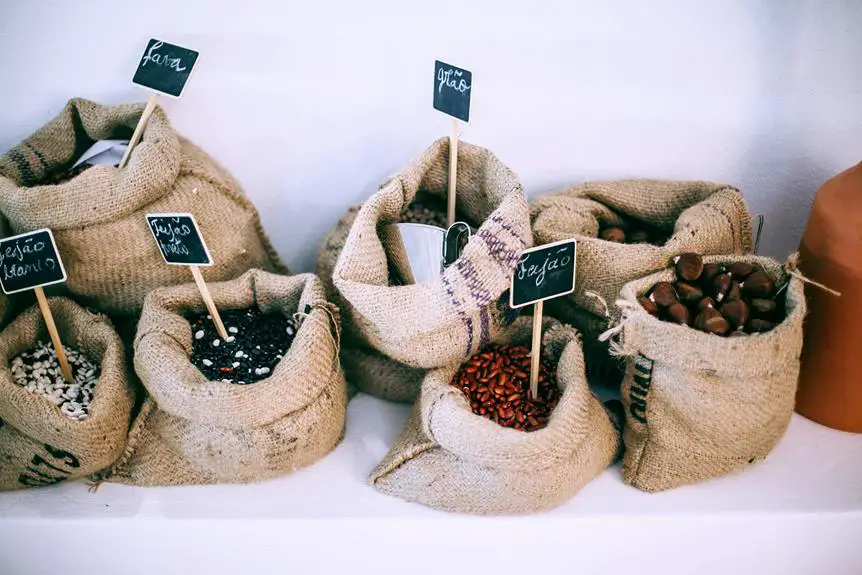When you think about fabrics, pinpoint and satin might come to mind, but have you considered how their unique qualities impact your choices? Pinpoint's textured weave offers durability and a polished look, making it suitable for professional wear, while satin's luxurious, glossy finish is often reserved for more formal occasions. Each fabric has its own strengths and weaknesses, and knowing these can influence your next project significantly. So, which fabric will best suit your needs, and what specific applications could benefit from their distinct characteristics?
Table of Contents
Overview of Pinpoint Fabric
Pinpoint fabric, known for its durable weave and subtle texture, combines the best of both comfort and sophistication in your wardrobe. When you choose pinpoint, you're opting for a fabric that feels great against your skin while maintaining a polished appearance. This lightweight cotton blend is tightly woven, giving it a crisp finish that resists wrinkling, making it perfect for both casual and formal settings.
You'll often find pinpoint fabric in shirts, blouses, and even tailored suits. Its versatility allows you to dress it up with a blazer or keep it casual with jeans. The fabric's breathability ensures comfort throughout the day, whether you're in a meeting or out with friends.
Additionally, pinpoint's subtle texture adds a unique visual interest, setting it apart from standard cotton options. You can easily pair it with various accessories, enhancing your style without overwhelming your look.
Plus, it's easy to care for, retaining its shape and color wash after wash. Overall, pinpoint fabric is an excellent choice for anyone seeking a reliable, stylish, and comfortable addition to their clothing collection.
Overview of Satin Fabric
Satin fabric, with its smooth and glossy surface, offers a luxurious alternative to pinpoint, making it a popular choice for formal wear and elegant occasions. You'll find satin in various garments, from evening gowns to lingerie, due to its ability to drape beautifully and enhance the wearer's silhouette.
This fabric is typically made from silk, polyester, or nylon, each contributing to its unique feel and appearance. The silk version is known for its breathable qualities and natural sheen, while polyester satin is more durable and often more affordable. When selecting satin, consider the weight and finish; heavier satin gives a more structured look, while lighter options flow more freely.
Satin's soft texture feels delightful against your skin, adding an element of comfort to any outfit. However, keep in mind that satin can be prone to wrinkles and snags, so it requires gentle care during washing and storage.
Key Differences Between Fabrics
When comparing fabrics, you'll notice that the textures and finishes of pinpoint and satin create distinctly different visual and tactile experiences.
Pinpoint fabric features a more structured, textured surface, often with a slight sheen that adds sophistication without being overly glossy. This texture is achieved through the weaving process, giving it a crisp feel that's ideal for tailored garments and formal wear.
On the other hand, satin stands out with its smooth, lustrous finish, often associated with luxury. It has a soft drape that glides effortlessly, making it popular for evening gowns and high-end lingerie. Unlike pinpoint, satin's surface can easily show wrinkles, which might necessitate more careful handling.
Durability also plays a role in their differences. Pinpoint is generally more durable and can withstand regular wear and tear better than satin, which, while beautiful, may require more maintenance to keep its elegant appearance.
Ultimately, your choice between pinpoint and satin will largely depend on the aesthetic and functional demands of your project, as each fabric brings unique qualities to the table. Understanding these key differences helps you make an informed decision for your next fabric selection.
Best Uses for Each Fabric
Choosing the right fabric for your project can enhance both its functionality and aesthetic. Pinpoint is ideal for structured garments, while satin is perfect for luxurious evening wear. Understanding the best uses for each fabric will help you make informed decisions.
Here are the top uses for each fabric:
- Pinpoint Fabric: This fabric works wonders for tailored shirts, blouses, and light jackets. Its crisp finish and durability provide a polished look that's perfect for professional settings.
- Satin Fabric: Satin shines in evening gowns, cocktail dresses, and luxurious loungewear. Its smooth texture and glossy appearance create a stunning visual impact, making it a favorite for formal events.
- Accessories: Both fabrics can be used for accessories, but they serve different purposes. Pinpoint is great for structured bags or ties, while satin can elevate your look with elegant scarves or hair ties.
Care and Maintenance Tips
To keep your pinpoint and satin fabrics looking their best, it's essential to follow specific care and maintenance tips tailored to each material. Pinpoint fabric is durable, but it still requires some attention. You can machine wash it in cold water with a gentle cycle to avoid any damage. It's best to hang it to dry or use a low heat setting in the dryer. Iron it on a low setting if needed, but check the care label for specifics.
Satin, on the other hand, is more delicate. Always hand wash or use a gentle cycle in cold water. Avoid wringing it out; instead, lay it flat or hang it to dry. If you need to iron satin, do it on the lowest heat setting with a pressing cloth to protect the fabric.
Here's a quick comparison to help you remember:
| Fabric Type | Care Instructions |
|---|---|
| Pinpoint | Machine wash cold, low heat dry |
| Satin | Hand wash, lay flat to dry |
Frequently Asked Questions
What Is the History Behind Pinpoint and Satin Fabrics?
You'll find that pinpoint fabric has roots in traditional shirting, evolving over centuries, while satin's luxurious sheen dates back to ancient China, becoming popular in Europe during the Renaissance. Both fabrics have fascinating histories worth exploring.
Can Pinpoint and Satin Fabrics Be Blended With Other Materials?
Yes, you can blend pinpoint and satin fabrics with other materials. Mixing them enhances texture and durability, creating unique textiles that suit various applications. Experimenting with blends can yield exciting results for your projects.
Are There Any Eco-Friendly Options for These Fabrics?
Yes, you can find eco-friendly options for various fabrics. Look for organic cotton or recycled polyester blends, which reduce environmental impact. Sustainable brands often prioritize eco-conscious practices, so check their certifications for assurance.
Which Fabric Is More Durable Over Time?
When considering durability, you'll find that one fabric typically withstands everyday wear and tear better than the other. It's essential to evaluate your intended use to determine which option will last longer over time.
How Do These Fabrics Perform in Different Climates?
When considering fabrics for different climates, you'll find that some breathe better in heat, while others provide warmth in cold. Choosing the right fabric can enhance your comfort, regardless of the weather conditions you face.
- How Does Ring Spun Cotton Affect Garment Fit and Shape Retention? - August 13, 2024
- What Are the Challenges in Producing Ring Spun Cotton? - August 13, 2024
- Is Ring Spun Cotton Suitable for Plus-Size Clothing? - August 13, 2024







